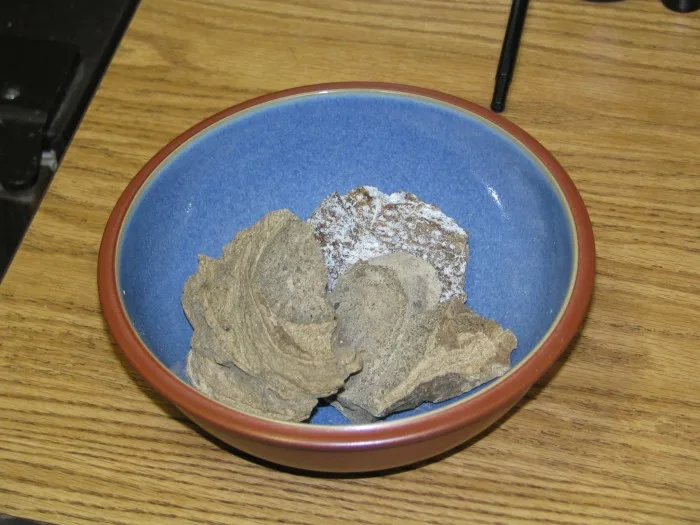
A blob by any other name: Some call it whale waste, others call it floating gold
Every day on beaches across the world, there is an opportunity to become hundreds of thousands -- if not millions -- of dollars richer. That's if you know what you're looking for.
What may look like a gross, waxy, blob to some passerby could be an early retirement for others, if you're lucky.
We're talking about ambergris, a type of waste produced by male sperm whales, and this 'floating gold' has large monetary value.
Last month, 49-year-old Siriporn Niamrin stumbled upon a 7-kilogram block of the stuff outside of her beach home in southern Thailand. It's in the process of being assessed but if it turns out to be the real deal, it could be worth a whopping $330,000 CAD.
Every once in a while, you'll see stories like this pop up in the news. One of the largest finds to date occurred in November 2020, involving a Thai fisherman who earned around $900 a month. Naris Suwannasang, 60, is credited with the discovery of the 100-kg blob of ambergris, which could fetch him $4.2 million CAD if the verification process shows it's authentic.

A bowl of ambergris, estimated to cost thousands of dollars. Courtesy: Peter Kaminsk/Flickr CC BY 2.0
WHAT IS AMBERGRIS?
First of all, we can tell you what it (probably) isn't, contrary to what Google search results may tell you.
Though often referred to as whale vomit Scientific American says that may be technically incorrect -- although, like vomit, ambergris appears to be the result of stomach, er, activity.
But that's where the comparisons stop because it isn't thought to be expelled through the mouth but rather, comes out the other end.
Male sperm whales create ambergris when they dine on squid, and it's used as a fatty intestinal secretion to protect against the mollusk's pointy beak.
It's most commonly found in the Southern Hemisphere but sperm whales are present in all of the world's oceans, meaning there's potential for ambergris to wash up anywhere.
Still, it's an uncommon find, presenting in less than 5 per cent of all whale carcasses, The Natural History Museum says.
WHY IS AMBERGRIS SO VALUABLE?
Ambergris has been used in commercial products like perfumes and pharmaceuticals for thousands of years. In the mid-1800s, when whaling was widespread, ambergris was used in soaps and lamp oils.
One of the reasons it's so valuable is because it ages "like fine wine". Years of weathering give it what Scientific American calls a "sweet, earthy aroma," akin to tobacco or pine which becomes more intense -- and more valuable -- over time.
Whales expel ambergris in massive blocks, sometimes weighing hundreds of kilograms. Those blocks break up and float across the ocean, and the longer they're out there before being discovered, the more they're worth.
Today, most perfumes use a synthetic version of ambergris, although there is speculation some high-end products occasionally use the stuff that's found on beaches.
In some countries, like the U.S. and Australia, the possession and sale of ambergris is illegal. But in other parts of the world, like the U.K., it is legal to salvage ambergris off a beach and sell it.
It is not, however, legal to hunt a whale in most countries for any products, due to international protections that have been in place since the 1980s.

*A map showing the distribution of sightings of sperm whales, based on whaler and surveyor records. Courtesy: GeoCart and Wikipedia.
WHO IS BUYING AMBERGRIS?
That's the big question.
As mentioned above, some high-end perfumes may still use ambergris but Saskia Wilson-Brown of the Institute for Art and Olfaction tells Atlas Obscura that's doubtful, as difficulty in securing the product would most certainly lead to supply chain issues.
There appears to be a thriving black market for the product, but vendors aren't divulging whose buying.
And that brings us to the main issue with using ambergris in commercial products.
The Whale and Dolphin Conservation organization says ambergris is problematic because it "perpetuates the notion of whales as a commodity," and sperm whales need to be protected, given this historically over-hunted species is listed as endangered in the U.S., and listed as vulnerable internationally.
"Synthetic alternatives to ambergris do exist and the use of these should be encouraged," Richard Sabin, Curator of Marine Mammals at the Natural History Museum says in a statement.
"This would prevent whales being viewed in any way as a resource that humans can exploit."











